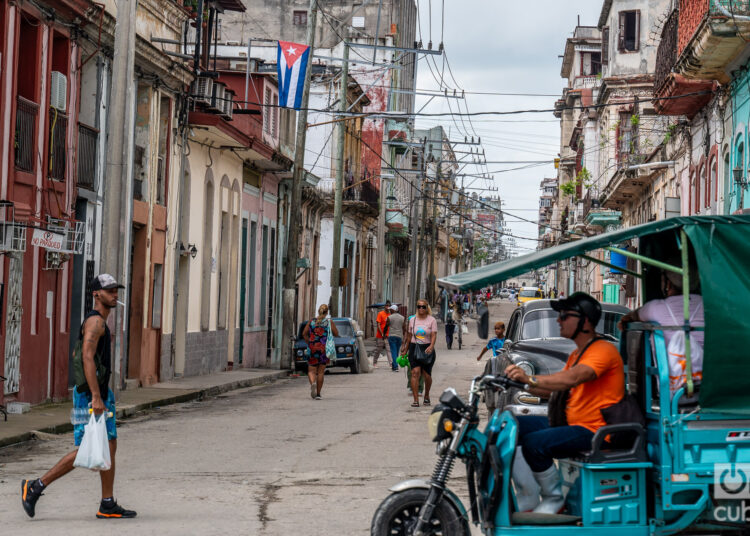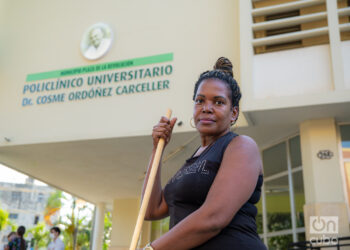My mother must have been ten years old when the family was turned out onto the main road.
My grandfather, who farmed a tobacco plantation near the town of Cabaiguán, had refused to sell two consecutive harvests due to the outrageous prices offered by the tobacco merchants. Unfortunately, when the 1929 crisis caused the bankruptcy of the bank where he had his savings, he was forced to sell those accumulated harvests at even worse prices. Even so, he couldn’t afford to pay the rent for the farm. So the landowner evicted them without further ado, “throwing them out onto the royal road,” as they said back then referring to the main road, and keeping what my grandfather had invested in the farm, including housing, crops, and animals. My mom, who evoked that Los Valles estate as if it were the Garden of Eden, used to tell me about that fateful day, indelible in my family’s memory, ever since I can remember.
I tell this story every time I have to explain how the agrarian reform interfered with vested interests and moved common sense, bringing to light an ancestral vision of justice that predates communism, even among people who were not at all revolutionary, who called themselves political outsiders, Catholics, and from the very lower middle class, like my mother’s seven siblings.
I bring it up here and now to illustrate the diversity of subjects and attitudes within that umbrella term called “the private sector.” There was my grandfather, a farmer who owned a plot of land that was owned by a landowner who had the law and order on his side, and a small capital invested in the hands of a banker who could declare bankruptcy, as well as a production of tobacco leaves that speculators could plunder, taking advantage of the “free market.”
You don’t need a doctorate to know that those four individuals from the “private sector” occupied very different positions in the social structure and suffered the great crisis in radically different ways, from top to bottom.
It’s no coincidence that more than 200 years before our family’s exodus from the Los Valles estate, thousands of rebellious tobacco farmers led the first uprisings against the Spanish empire and its commercial monopoly south of Havana and other provinces. And that many of them became outlaws, rebels in areas where the crown’s troops couldn’t reach them; to found enclaves of free, autonomous men, far from the centers of colonial power, which they could defend, if necessary, with arms. Among those distant areas would emerge Vueltabajo, the legendary place of black tobacco, where my grandfather would arrive on the eve of the final War of Independence.
In addition to being early rebels, those enterprising Cubans resisted the rules of colonial power with the adage “it is obeyed, but it is not complied with.” Smuggling smoked meat and leather with sailors along the island’s endless coastline, including privateers and pirates, they violated the rules of the state commercial monopoly as long as they could, starting in the 16th century.
It is not surprising that the first literary work identified as Cuban, which depicts the nature, animals, and fruits of this region, has as its central plot an event starring local merchants from Bayamo, dedicated to the noble trade of smuggling, who defend their town from an attempted assault and kidnapping by the pirate Gilberto Girón.
Aside from the literary value or historical document attributable to Silvestre de Balboa’s poem “Espejo de paciencia” (1606), the fact that its heroes are merchants from the town of Bayamo, a black slave, and a Spanish bishop who makes common cause with them, tells us more about colonial society, its strata and connections, the sense of belonging to the native country, and the anticipation of Cuban identities than the literary codes of Spanish descent with which it was written.
José Antonio Aponte, a self-employed worker (carpenter and sculptor), was the emblematic figure of the black and mestizo struggles for independence and social emancipation. Small farmers included the Maceo-Grajales family, where great Mambi leaders were formed, including Antonio himself, who managed a small farm and sugar factory in his exile in Costa Rica. General Máximo Gómez and other independence heroes also engaged in this same agricultural activity, or they practiced independent professions as lawyers, doctors, dentists, and veterinarians.
Although the Cuban sugar aristocracy was rather annexationist and autonomist, the Cuban-born elite produced figures enlightened in the ideas of the revolution, such as Carlos Manuel de Céspedes, Ignacio Agramonte, and Francisco Vicente Aguilera. Salvador Cisneros Betancourt, one of the wealthiest patriots, also led, along with Juan Gualberto Gómez, the resistance against the Platt Amendment* until the very end.
Beyond any inventory of prominent rebels and patriots, the presence of the middle class in social struggles and in the construction of Cuban political culture, including the most radical, as well as among its most prominent organic politicians, intellectuals, and artists, encompasses a range of currents of thought and action, from Antonio Guiteras to Juan Marinello, and goes far beyond a specific ideological spectrum.
The clearest expression of this grassroots revolutionary plurality is captured in Fidel Castro’s call to a diversity of social groups concerned with the transformation of the established order. “We call the people, if it is a question of struggle” is the most important paragraph in the long defense known as History Will Absolve Me.
Among these subjects of revolutionary change, Fidel identifies “the 100,000 small farmers, who live and die working land that is not theirs,” and “who cannot love it or improve it, because they do not know the day a sheriff will come with the rural guard to tell them they must leave.” “To the 30,000 teachers and professors, so selfless, self-sacrificing, and essential to the better destiny of future generations, yet who are treated and paid so poorly”; “to the 20,000 small business owners overwhelmed by debt, ruined by the crisis, and finished off by a plague of filibustering and corrupt officials; to the 10,000 young professionals: doctors, engineers, lawyers, veterinarians, educators, dentists, pharmacists, journalists, painters, sculptors, etc., who leave the classrooms with their degrees, eager to fight and full of hope, only to find themselves in a dead end.”
The people are not a specific social class, nor the poor and helpless to whom politicians make promises of redemption, but all those capable of fighting for a more just order that represents “freedom and happiness.” And at the heart of that strength is the middle class.
I should have started by clarifying that the middle class should not be confused with a segment of traffickers and grocers eager to extract surplus value from their workers, milk everything they come across, or speculate on the black market. Naturally, it includes entrepreneurs, autonomous producers, and merchants, but its core is made up of professionals. It is this educational level that distinguishes it in its social consciousness and its influence on national life as a whole, especially in its role in the processes of transformation.
A critical analysis of this condition in today’s Cuba would require a broader debate than we can undertake here. For the purposes of this article, I simply want to conclude by saying that Cuban socialism has created a middle class as part of its achievements in social development. The urbanization of 76% of the population, access to education for all Cubans, the graduation of millions of professionals, and their presence not only in the skilled workforce but also in state and political institutions, social organizations, and the public sphere is too obvious to require demonstration.
A significant portion of the private sector draws on these professionals, the same ones who make up the majority of the National Assembly and the Central Committee of the Communist Party of Cuba, teach in universities, provide health services in hospitals and polytechnics, produce works of art and write books, or generate media content. Considering these spaces as watertight compartments rather than segments connected by communicating vessels limits our understanding of real social dynamics.
Those who until yesterday were doctors or diplomats may have become entrepreneurs, just as some who work as teachers maintain a private activity at the same time. Although we don’t have these figures at hand, we can attest to these real social ties and networks simply by looking around us. Those we represent as separate sectors, state-private or cooperative-public, are interconnected in a broader social group, whose common features may outweigh their visible differences.
Rethinking ourselves as a society requires this balanced examination, instead of lamenting inevitable labor migration or stigmatizing a sector that has emerged from the same social fabric as the others. Understanding this real society can help dispel mental cobwebs and other barriers that stand in the way of the “unity in diversity” we talk so much about. Instead of wanting to look in the rearview mirror of what we were, we can move in the only direction we can: forward.
*The Platt Amendment was a piece of U.S. legislation enacted as part of the Army Appropriations Act of 1901 that defined the relationship between the United States and Cuba following the Spanish–Cuban-American War.







